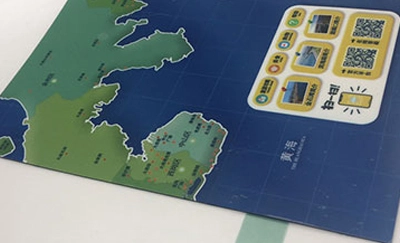
Membrane switch is an operating system that integrates key functonality, indicator components and instrument panels. It is a plastic electronic product that uses soft materials such as PC, PET, FPC and double-sided adhesive, manufactured through screen printing technology, with a multi-plane combination of sealed graphics, buttons, sign symbols, conductive and membrane switch functions. It is widely used in industries and fields such as electronic communication, industrial control, medical equipment, automotive industry, instrumentation, household appliances, children's toys, military equipment, etc. The composition of the common parts of a membrane switch are as follows:
The panel layer is generally made of PET, PC and other transparent, light-transmissive film materials with a thickness of less than 0.25mm, printed with elaborate graphics and text. As the main function of the panel layer is to provide identification and button functionality, it is necessary to use materials that have high transparency, ink adhesion, elasticity and toughness.
The adhesive layer mainly connects the panel layer and the circuit layer to achieve sealing and connection. This layer generally requires a thickness between 0.05-0.15mm, with strong viscosity and anti-aging properties. During production, special double-sided adhesive for membrane switches is generally used, and some membrane switches require materials with different properties depending on their waterproof and high-temperature resistance requirements.
These layers use functionally outstanding polyester film as the carrier for the switch circuit graphics, and special processes are used to print conductive silver and carbon paste on the film, giving it conductive functionality. The thickness is generally within 0.05-0.175mm, with 0.125mm PET being common.
It is located between the upper and lower circuit layers and provides sealing and connection functionality. PET double-sided adhesive is generally used, with thicknesses ranging from 0.05-0.2mm. When selecting materials for this layer, overall product thickness, insulation, circuit button package touch and sealing performance should be fully considered.
The selection of back adhesive is closely related to the materials that the thin film switch is pasted with, and common options include ordinary double-sided adhesive, 3M glue, waterproof adhesive, etc.
Membrane switches are produced using polyester film. They have excellent insulation and heat resistance, high mechanical strength, are transparent and airtight, and have exceptional flexibility and elasticity. The use of membrane switches is extremely wide-ranging, especially in this era of widespread electronic products. Its applications have been widely promoted, which also brings new opportunities and challenges to membrane switch manufacturers. This constantly urges manufacturers to develop and develop new products.